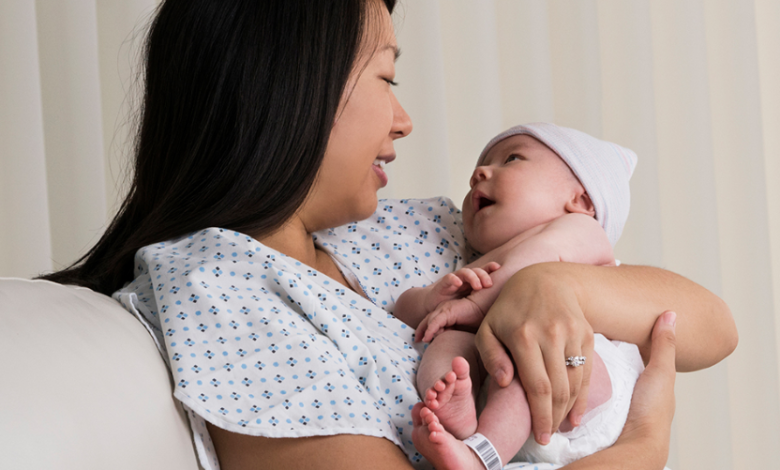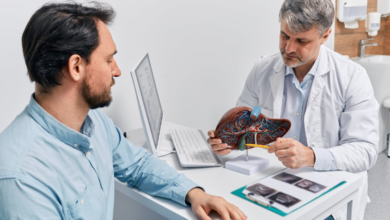The Truth About Getting Your Pre-Baby Body Back

Having a baby changes everything about your life, including your body. Social media is full of celebrities and influencers showing off their flat stomachs just weeks after giving birth, making it seem normal to “bounce back” quickly. But the reality for most women is completely different, and there are some important truths everyone should know about what really happens after pregnancy.
Your Body Did Something Amazing
Pregnancy puts your body through incredible changes over nine months. Your organs shift around to make room for a growing baby. Your ribcage expands. Your pelvis widens. The muscles in your stomach stretch to accommodate a human being who weighs several pounds and takes up a lot of space.
Think about it this way: if you stretched a rubber band really far for nine months, it wouldn’t just snap back to its original shape right away. Your body is similar, except it’s way more complex than a rubber band. Some changes take time to reverse, and some might stick around permanently.
The changes aren’t just about weight gain either. Your entire core structure gets rearranged during pregnancy. The muscles that normally hold everything together in your midsection have to work differently when there’s a baby in there. Sometimes these muscles can actually separate down the middle, creating a gap that doesn’t always close on its own after birth.
What Actually Changes During Pregnancy
When you’re pregnant, your abdominal muscles have to stretch to make room for your growing baby. The connective tissue between your main stomach muscles, called the linea alba, gets thinner and wider as your belly expands. This is completely normal and happens to almost every pregnant woman.
But here’s what many people don’t realize: sometimes this separation doesn’t go back to normal after delivery. The muscles might stay apart, creating what doctors call diastasis recti. This isn’t just about appearance, it can actually affect how well your core works and make everyday activities more difficult.
Many women notice that even months or years after having their baby, their stomach still looks different. It might pooch out or feel soft in a way it never did before. This isn’t necessarily about being out of shape, it could be because the underlying muscle structure has changed.
For some women, specialized diastasis recti treatment can help address these core issues when exercise alone isn’t enough. Physical therapy and targeted exercises designed for this specific problem can make a real difference in how the core functions and feels.
See also: Revolutionising Pond Health with Evolution Aqua Filtration
The Weight Reality
Everyone knows that pregnancy weight gain is normal and healthy. What fewer people talk about is how that weight comes off, or doesn’t come off, after birth. The truth is that losing pregnancy weight takes time for most women, and some might not lose it all.
Your body needs extra energy reserves while you’re breastfeeding. Your hormones are different for months after giving birth, which affects how your body stores and uses fat. Sleep deprivation, which is basically guaranteed with a new baby, can mess with hunger hormones and make weight management harder.
Plus, your lifestyle has completely changed. You’re caring for a tiny human who needs attention around the clock. Finding time to exercise regularly or prepare healthy meals becomes a real challenge. This isn’t a personal failing, it’s just the reality of new parenthood.
Some women do lose pregnancy weight quickly, but many don’t. Both experiences are normal. Bodies are different, pregnancies are different, and recovery looks different for everyone.
Your Skin Tells a Story
Stretch marks are one of those things that might stick around permanently. These marks happen when skin stretches quickly, which definitely occurs during pregnancy. While they often fade from dark red or purple to silver or white over time, they usually don’t disappear completely.
The skin on your belly might also feel different after pregnancy. It could be looser or softer than before, especially if you carried a large baby or had multiple pregnancies. Some women develop a pooch of loose skin that exercise can’t fix because it’s not about muscle tone, it’s about skin elasticity.
This is another area where realistic expectations matter. Creams and lotions might help skin feel softer, but they can’t undo the structural changes that happened during pregnancy. Some changes are simply part of your body’s story now.
The Breast Changes Nobody Talks About
Breasts go through major changes during pregnancy and breastfeeding. They get bigger during pregnancy, then often get even bigger once milk comes in. After you stop breastfeeding, they typically shrink again, but they might not return to their original size or shape.
Many women find their breasts are smaller after breastfeeding than they were before pregnancy. Others notice they’re shaped differently or sit differently on their chest. The skin might be different too, especially if you experienced a lot of size fluctuation.
These changes are completely normal, but they can be surprising if you weren’t expecting them. Again, this goes back to realistic expectations about what “bouncing back” actually means.
What You Can Actually Change
While some postpartum body changes are permanent, others can improve with time and effort. Muscle strength can definitely be rebuilt, though it takes patience and the right approach. Cardiovascular fitness can return to pre-pregnancy levels or even improve.
Core strength is often a big concern for new moms, and rightfully so. A weak core can lead to back pain, poor posture, and difficulty with daily activities. The good news is that core strength can be rebuilt with appropriate exercises and sometimes professional help.
Sleep, nutrition, and stress management all play roles in how your body recovers after pregnancy. These aren’t always easy to control with a new baby, but small improvements in these areas can make a difference in how you feel overall.
The key is starting slowly and being patient with the process. Your body has been through a lot, and it needs time to recover. Jumping into intense workouts right away can actually do more harm than good, especially if there are underlying issues that need to be addressed first.
The Mental Side of Body Changes
Adjusting to your postpartum body isn’t just physical, it’s emotional too. Many women struggle with accepting that their body looks and feels different after having a baby. This is completely understandable, especially when society sends messages about quickly “getting your body back.”
It helps to reframe the conversation. Instead of thinking about getting your old body back, think about helping your current body feel strong and healthy. Your body did an incredible thing by growing and birthing a human. The changes it went through were necessary and amazing.
Some women find it helpful to focus on what their body can do rather than how it looks. Can you carry your growing child? Can you play with them at the park? Can you keep up with daily activities without pain? These functional measures of health might be more meaningful than fitting into old jeans.
Moving Forward with Realistic Goals
The truth about getting your pre-baby body back is that you probably won’t get it back exactly as it was, and that’s okay. Your body has been through an incredible transformation, and some changes are permanent reminders of that amazing process.
What you can work toward is feeling strong, healthy, and comfortable in your skin. You can address functional issues that make daily life difficult. You can build back strength and endurance gradually and safely.
The most important thing is to be patient and kind to yourself during this process. Recovery takes time, and everyone’s timeline is different. Focus on taking care of yourself so you can take care of your family, and remember that your worth isn’t determined by how quickly you bounce back or whether you fit into your old clothes.
Your postpartum body tells the story of something incredible you accomplished. Learning to appreciate and care for it as it is now is just as important as any physical changes you might make.




